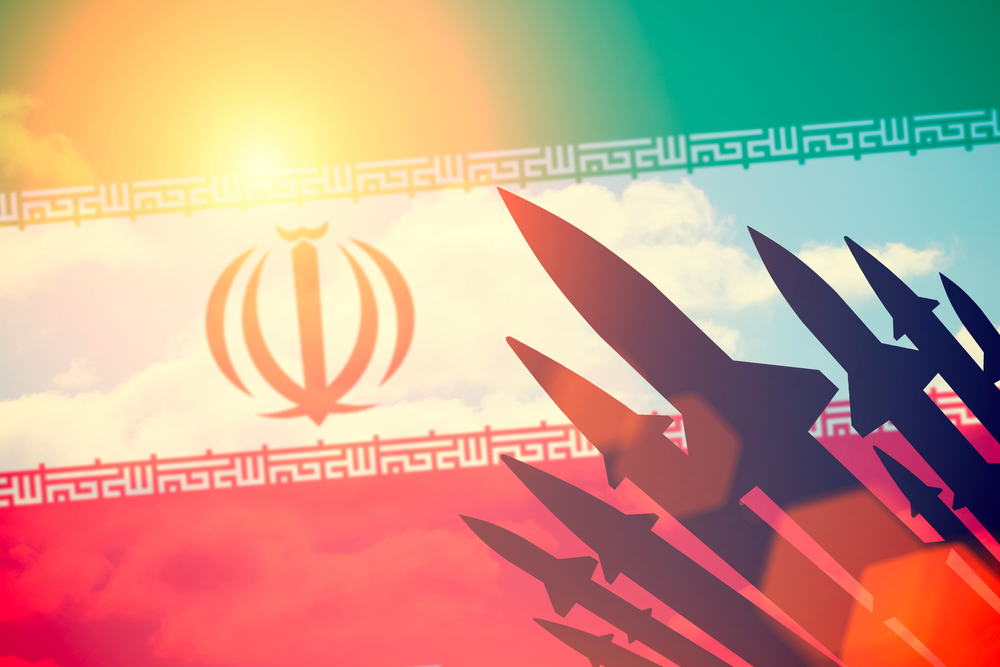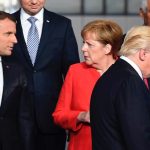by Mark Fitzpatrick
Iran’s reported test of a medium-range ballistic missile (MRBM) on December 1 gave its enemies further ammunition in their vitriolic campaign against the regime. But in exaggerating the offense, the Trump administration has undermined its case.
US Secretary of State Mike Pompeo denounced the missile launch, claiming, incorrectly, that it was a violation of UN Security Council Resolution 2231 (2015). The launch was provocative and contrary to the intention of the resolution, but it was not a “violation.” Unlike past resolutions, which mandated no such missile testing by Iran, Resolution 2231 only “calls upon” Iran not to test missiles designed to be capable of delivering nuclear weapons. This exhortation is why, after other launches over the past two years, the US and its European partners have issued condemnatory statements saying the tests were “in defiance of” or ‘inconsistent with’ the resolution.
So why now claim it as a violation? State Department lawyers would surely have advised Pompeo not to say so, unless, it being a Saturday, he winged it without any vetted talking points. Secretary of Defense James Mattis was more careful, in saying the test ‘violates the sense of the United Nations Security Council resolution’.
Going after Iran on All Fronts
Perhaps Pompeo cared less for legalisms because he is more invested in the all-out campaign to undermine the Iranian leadership. The thinking seems to be that in such an economic and psychological war, anything goes. ‘Throw it up against the wall, and see what sticks,’ is the classic catchphrase for such tactics.
Another example was Washington’s accusation at a review conference of the Organization for the Prevention of Chemical Weapons (OPCW) last month that Iran maintains an undeclared offensive chemical-weapons program. The US representative expressed concerns that Iran was developing ‘central nervous system-acting chemicals’ for offensive military purposes, and cited three past cases of reporting failures by Iran. One of these involved evidence from 2011 that chemical munitions uncovered in Libya appeared to have originated in Iran.
Legitimate concerns about insufficient transparency are why the State Department in the past, and as recently as March, has said it could not certify that Iran does not maintain a suspected undeclared chemical-weapons stockpile. Now, suddenly, the US has changed its position from ‘not certifying a negative’ to a positive claim. It is unlikely that new dispositive evidence of a chemical-weapons program has emerged in the past few months. Rather, there is a new policy of going after Iran on all fronts. Is the intelligence being adjusted to fit the policy?
Contradictions of US policy on Iran
Amplifying the missile threat, Pompeo said the MRBM tested on 1 December could hit parts of Europe and carry multiple warheads. For Europeans, this may sound scary. Keep in mind, however, that these two attributes offset one another: the more warheads, the greater the weight and thus the shorter the range. The missile in question may be the Khorramshahr, which, based on limited information, appears to have a maximum range of 2,000–2,200km when carrying a 1,000kg payload. Such a missile, when fired from the northwestern-most tip of Iran might be able to hit Athens, Sofia and Bucharest. But there is no reason for citizens in that corner of Europe to fear an attack from Iran.
If the missile did carry multiple warheads, they would probably be too small to be nuclear weapons. Also, the last two known test launches of the Khorramshahr, in July 2016 and January 2017, failed. Pompeo did not say whether the latest launch also failed. If so, it would be less scary.
The pattern of exaggeration undermines what should be an emphasis on Iran’s most dangerous forms of behavior. Among the most worrisome are its supply of missiles and rockets to Houthis and to Hezbollah. In a show-and-tell speech on 29 November, State Department Special Representative for Iran Brian Hook underscored the dangers of such weapons being launched against civilian targets.
Yet the US policy for countering such weapons transfers is tied up in contradictions. The most glaring is that by wrapping up the demand to stop such transfers with a dozen other demands that Iran could never accept in totality, the US has no leverage to stop the arms trade. Even if Iran did so, US policy is not to offer any benefit unless Iran also succumbs on all other fronts.
The best answer to the Yemen war is to arrange a ceasefire, as well as a Saudi–Iran dialogue. Pompeo and Mattis on 31 October laudably called for such a ceasefire and for all parties to join UN-led peace talks within 30 days. Those 30 days are now up, to no effect.
One would hope that the US would be twisting arms to persuade its Arab partners to negotiate. On the contrary, the Trump administration is doubling down on its support for the Saudi-led military action in Yemen (although Congress appears to have a different view). In his speech, Hook threatened that the US could itself employ military force if Iran did not comply with its demands. Hook noted that Iran had no business being in Yemen to begin with. The same might be said of the US joining the military intervention there.
There is one more contradiction in the claim that Iran’s missile test violated Resolution 2231. Has Washington forgotten that the resolution also “calls upon” all member states to refrain from actions that undermine the implementation of commitments under the 2015 Iran nuclear deal? Anybody who claims Iran is violating the resolution also has to conclude that, by pulling out of the accord, so is the United States.
Mark Fitzpatrick is the executive director of The International Institute for Strategic Studies–Americas, where this post originally appeared.






So I suppose MF trusts the Ayatollahs with these weapons. It is okay to criticize the US administration, but please don’t make the Ayatollahs look good in the process will you?
Simply put. In a bad neighborhood if a home is constantly threatened to be attacked the owner of the house is entitled to the God’s given Right to own the Biggest Gun he/she can purchase legally for defending his/her family!
Thanks to Mark Fitzpatrick for writing this. I am afraid that Trump/Pompeo/Bolton and now Hook have gotten many potential critical commentators spooked about writing that a spade is a spade.
It increasingly looks like an attack on Iran has made it to first place over North Korea in the triumvirate’s agenda. And time is running short to get it going. A worry is that the Democratic-controlled House may support an attack on Iran, and you know why. So who might try at least to put up a barricade? Is it hoping too much that European governments would state they would not join the U.S. in attacking Iran, and mean it? Probably too much to ask right now, when European governments are full with their own problems. I guess a question to ask is how would Russia take advantage of American getting itself deeply engaged against Iran – try a move in the Baltics, maybe even in Ukraine? What about China in the South China Sea? There seem to be lots of potential downsides, but who will make that case?
Dear Ali,
It is an Ayatollah’s attitude to try to show something or somebody ‘good’ or ‘bad’, ‘heavenly’ or ‘evil’. A scientific mind thinks about realities and tries to express them as they ‘are’ not ‘as he thinks they should be’. This article represents a scientific and pragmatic one which might not be beneficial for ‘Ayatollah’s mindset’ in general!
So Iran has violated the resolution? Is that the same deal that the USA has violated by not only signing it then breaking it but sanctioning other countries that do not violate the deal.
If the UNSC had meant a ban rather than a far weaker call upon, then they would have said so.
Also, how are they demonstrating that the missile in question was designed to be capable of carrying nuclear weapons? They haven’t even identified the missile. If it was a Khorramshahr, it might be able to lift a single warhead but that basic feature is not any where near what is necessary to deliver and detonate a nuclear fusion weapon.